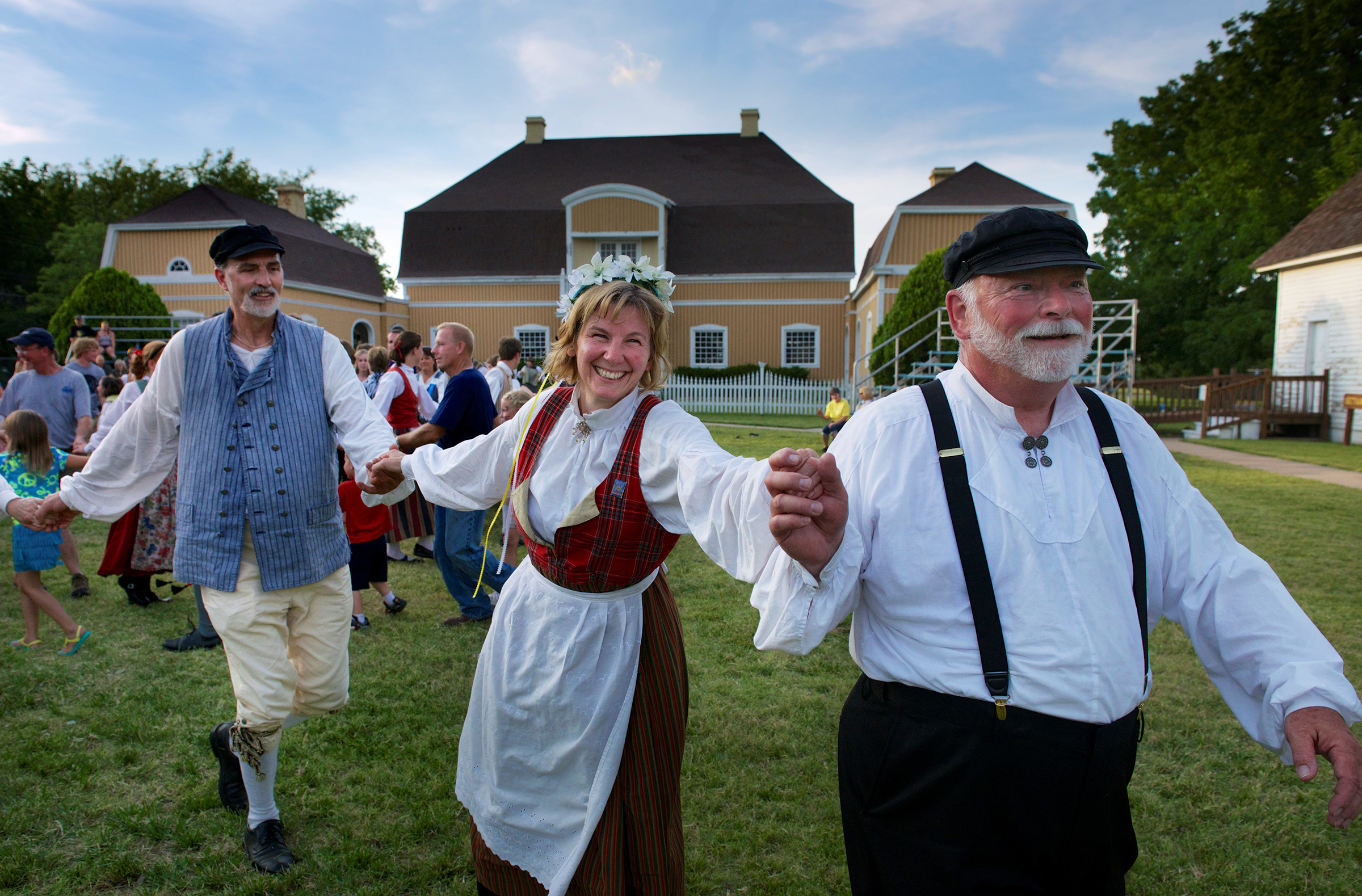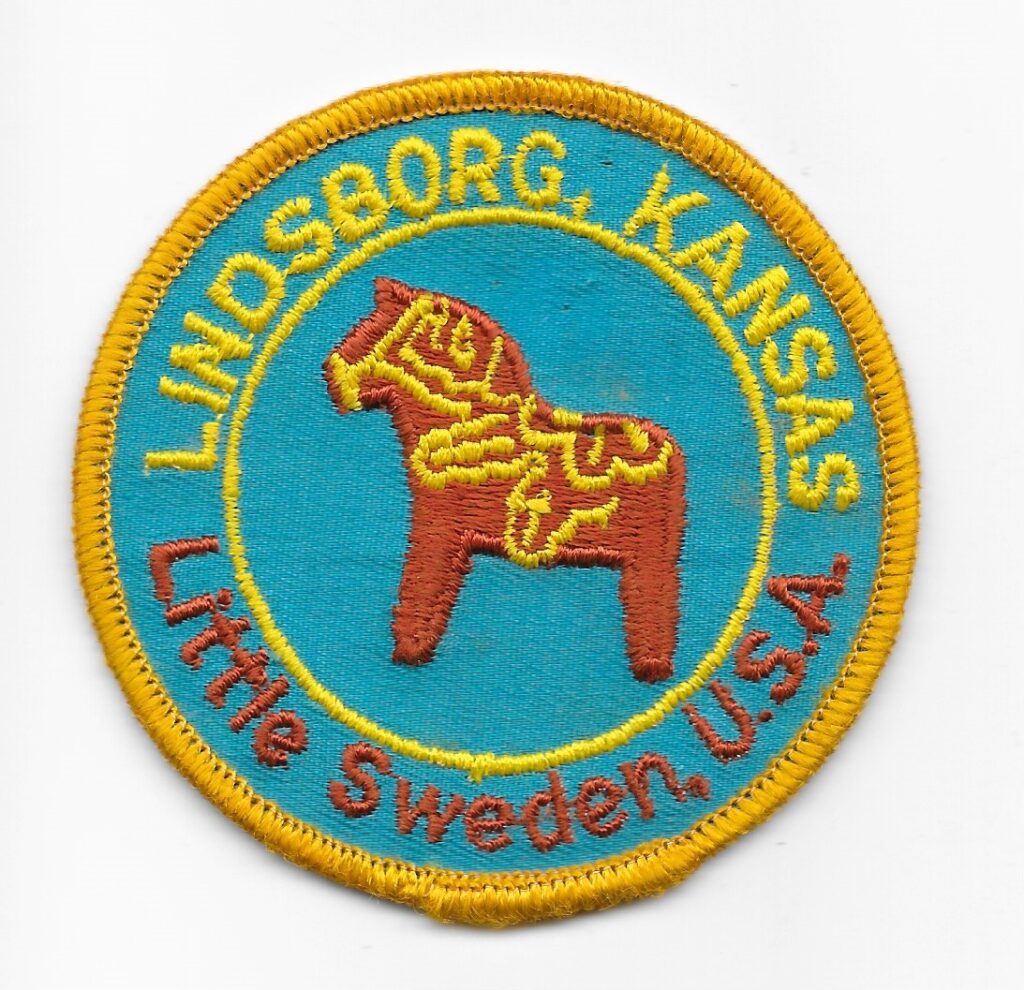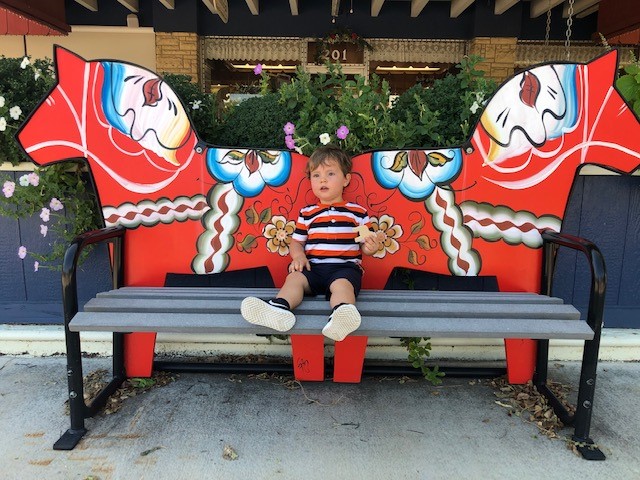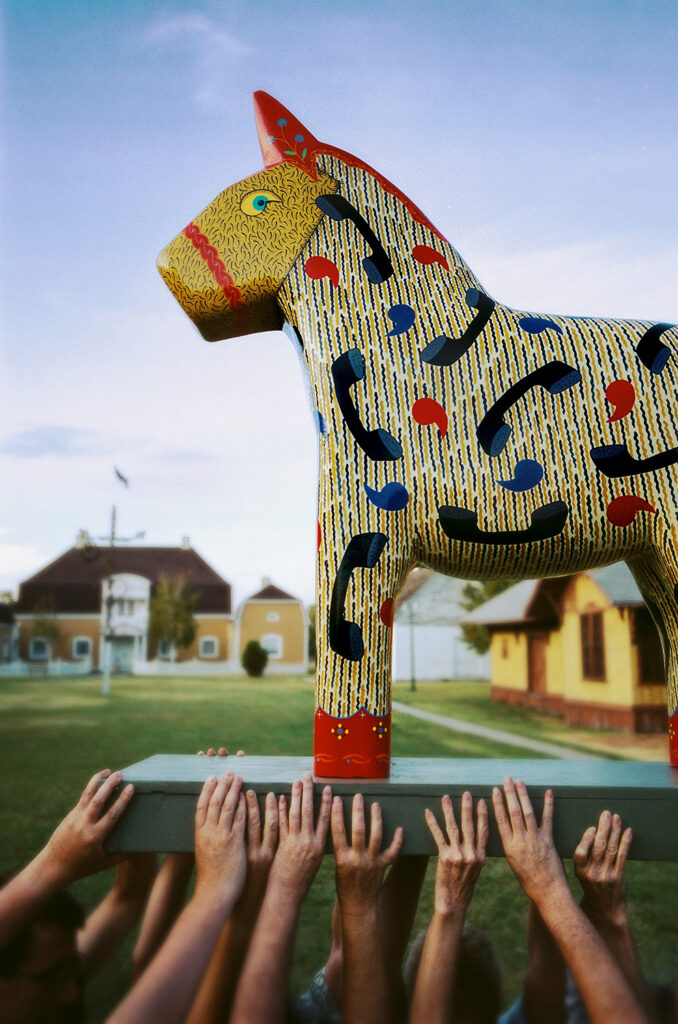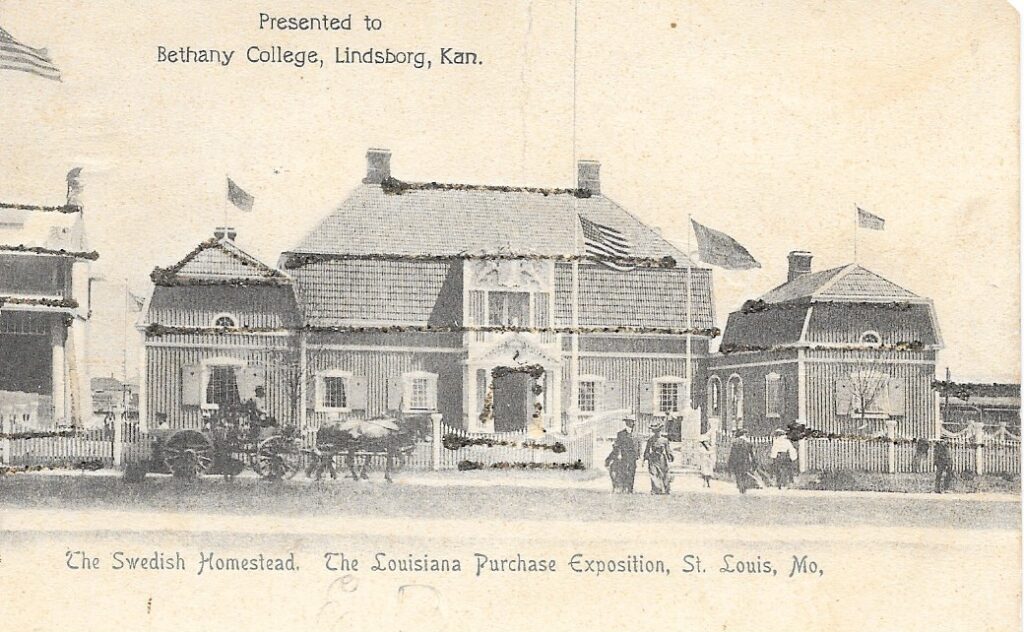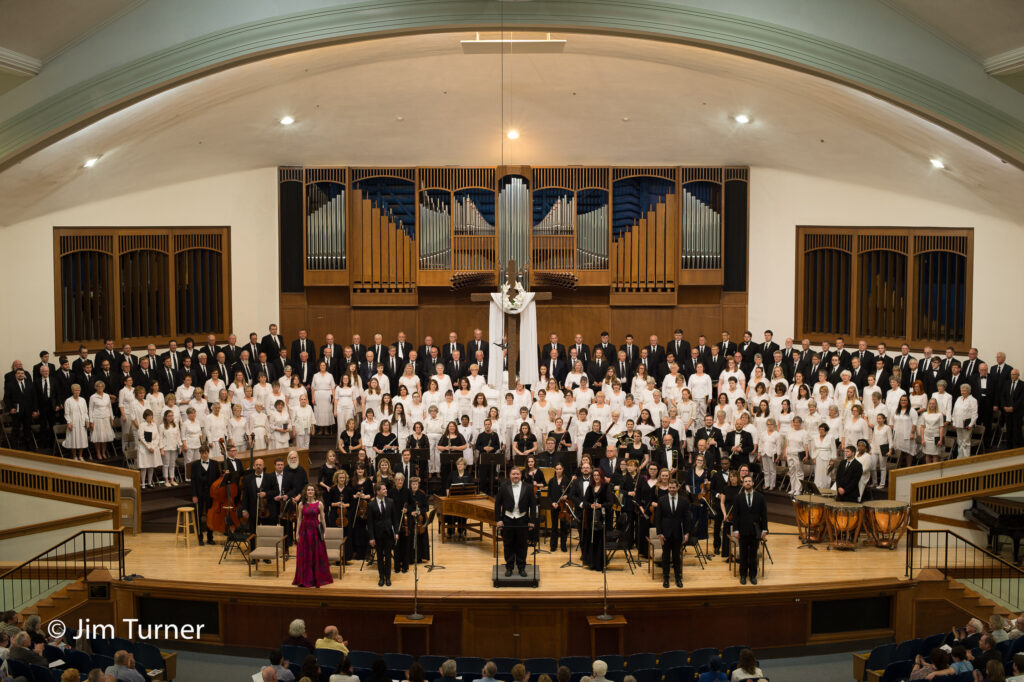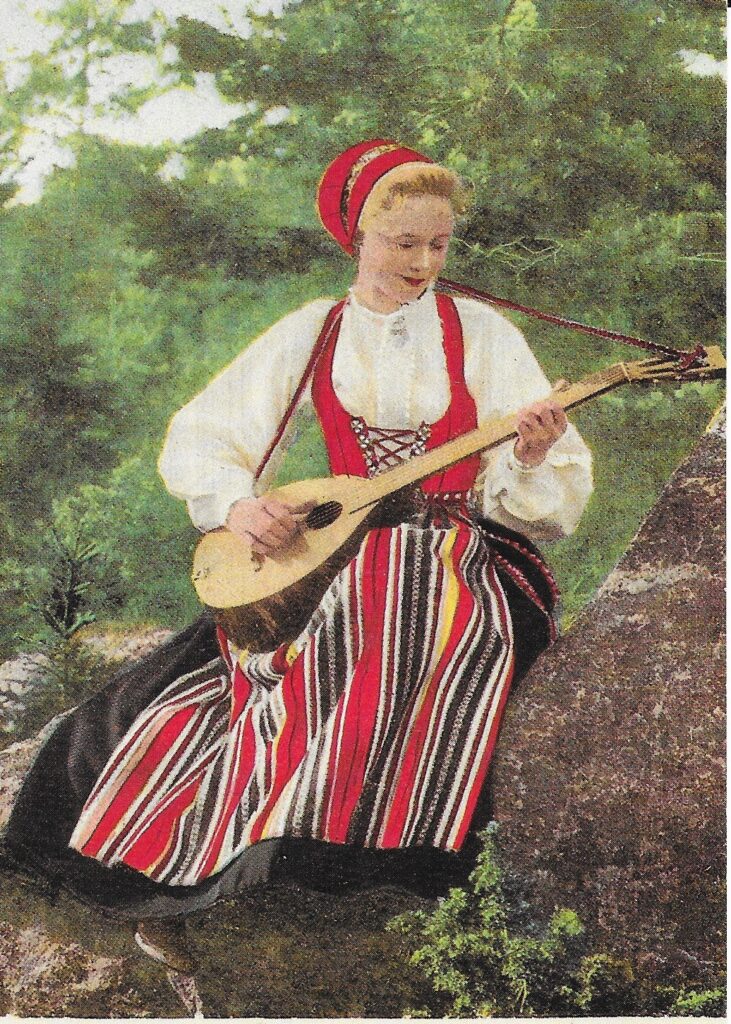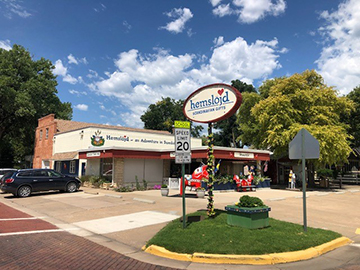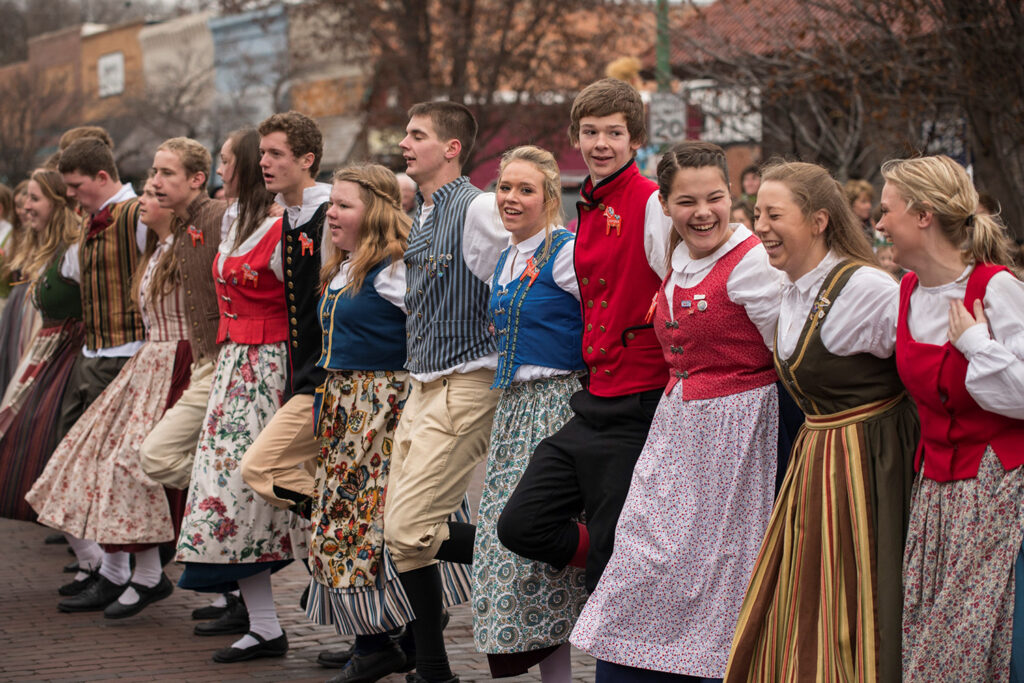Following in the footsteps of its resourceful founders, today’s Lindsborg artfully blends old traditions with the forces of modern life. Settled by Swedish immigrants in the 1860s, nestled in the Smoky Valley, this community of about 3,500, proudly displays its Swedish heritage and love of the arts.
The Swedish Dala horse, at one time a beloved children’s toy, is a traditional folk art, a carved, painted wooden horse statue. Today it has become a symbol of its home, Dalarna as well as a symbol of Sweden itself. The most common version is carved and painted bright red with details and a harness in white, green, yellow and blue.
Lindsborg has adapted the Dala horse as its community logo and symbol of welcome. It is part of the official city seal. In addition, many homes display plaques painted by local artists and affixed to the front porch or on poles in Lindsborg and surrounding communities.
But you will be thrilled to learn there is a wild herd of Dala horses—the only herd in the entire U.S.—that roams freely throughout the town. In 2000, the first traditional Dala was cast in a large fiberglass form, an idea fashioned after that of Chicago’s 1999 “Cows on Parade” art installation.
In Lindsborg, each wild Dala is sponsored by locals or people with Lindsborg connections and decorated by the town’s many artists. A free map and brochure developed by the Lindsborg Convention & Visitors Bureau describes each horse’s location and meaning. For example, Kronor, the Dollar Horse at 109 S. Main St., hand-painted by local artist Shirley Malm, is named for the Swedish money unit with the greenback features of a dollar bill, sponsored by Farmers State Bank.
Hemslöjd, Swedish for handicraft, is a shop that carries handcrafted items made in the Swedish style and from Sweden; Owner Corey Peterson proudly says it is the number one importer worldwide of traditional Dala horses from the Nils Olsson Dala Horse Factory in Sweden. A six-foot-high Dala horse marks the shop’s location. In addition, artists in the Hemslöjd workshop create every day (except Sunday) different types of wooden items, including a distinctive flat version of the Dala horse and custom etched glassware.
The town’s Swedish heritage is also commemorated in its popular celebrations: Våffeldagen in March when Swedish waffles and waffle costumes take center stage; “Svensk Hyliningfest,” (Swedish honoring festival) the bi-annual celebration that pays homage to pioneer Lindsborg settlers; and “Midsummer,” as well as St. Lucia, a celebration of the winter solstice—all times of folk music, dancing, arts, crafts and culinary specialties.
The Swedes brought with them a great love of the arts. Today the town takes its cultural responsibilities very seriously, supporting more than 60 artists, a dozen art galleries along with the annual Messiah festival, held every Easter week since 1882 at Bethany College, considered the oldest continuous live performance of Handel’s Messiah in the country. Many volunteer singers come from around the country to be part of the performance and to check it off their musical bucket list.
Small World Gallery, home to National Geographic Photographer Jim Richardson, is found on Main Street. Co-owner and wife Kathy, a longtime enthusiastic arts advocate, considers the town’s volunteer efforts a strong ethic of the community. “Volunteerism is the big engine for festivals as well as all celebrations. That’s what makes Lindsborg so special,” she says.
Built in 1898, one of the few working roller mills in the United States fires up every May for demonstrations, but is open to the public year-round to lend itself to a better understanding of the early days of grain production. Mills like this were developed to process the hard red winter wheat that was introduced to Kansas in the late 19th century. The mill sat vacant for years until volunteers raised money and even performed physical labor for its 1981 restoration. “It was an affair of the heart,” notes Kathy Richardson.
Just across the street is the 1904 St. Louis World’s Fair Swedish Pavilion designed by notable Swedish architect at the turn of the century, Ferdinand Boberg, and the only example of his work in the U.S. The building follows the design of the traditional Swedish manor house or Herrgård honoring Sweden’s architectural heritage. It was moved from Bethany College to the Old Mill Museum, and was entered in the National Register of Historic Places in 1974.
Lindsborg is certainly one of America’s best small towns with a large impact.
Its highlights of traditions and arts demonstrate a grassroots creativity that showcases the values of the original Swedish immigrant settlers.
For additional information:
visitlindsborg.com
lindsborghistory.org
hemslojd.com
Cynthia Elyce Rubin, Ph.D. is a visual culture specialist, travel writer and author of articles and books on decorative arts, folk art and postcard history.

